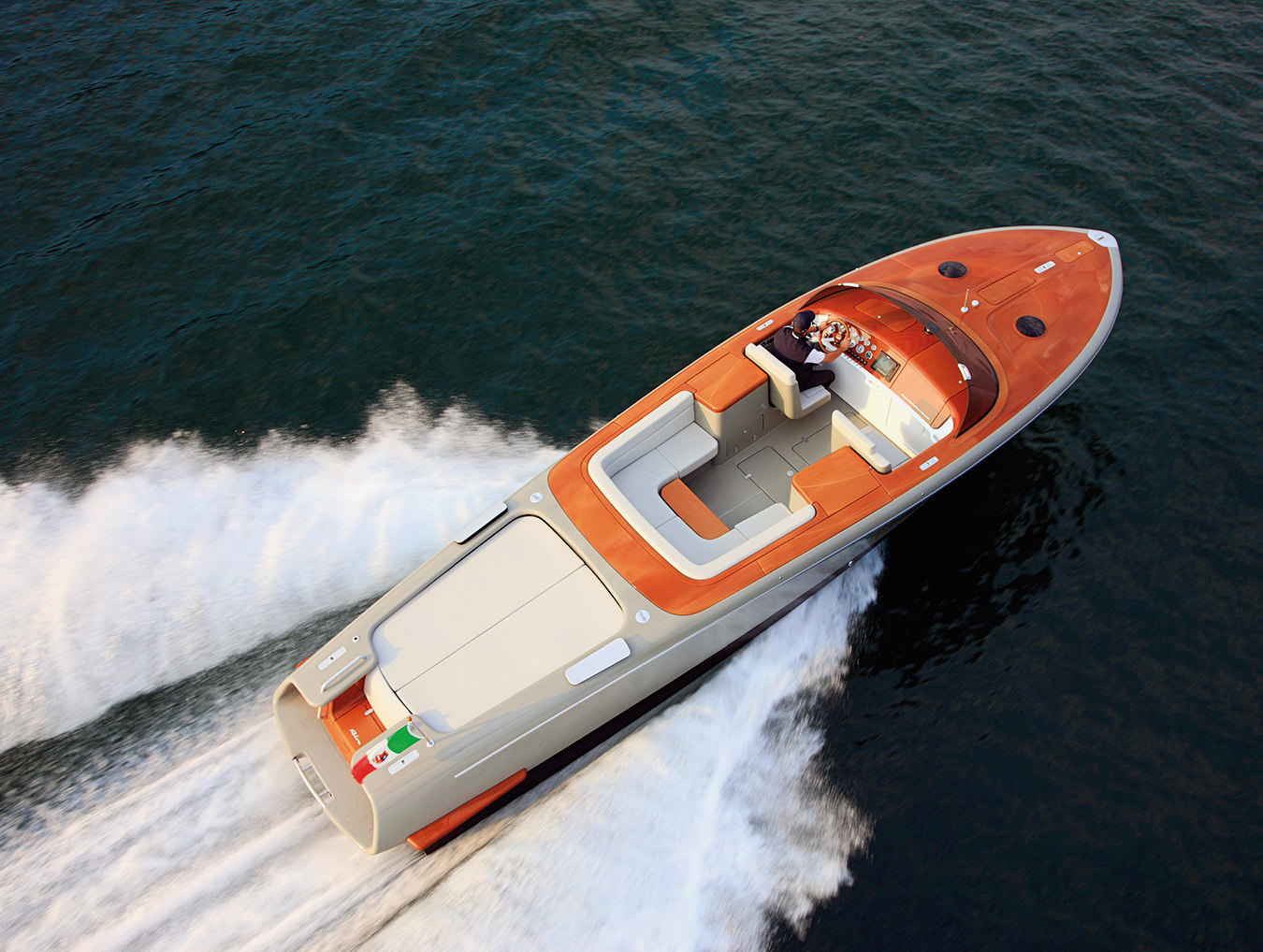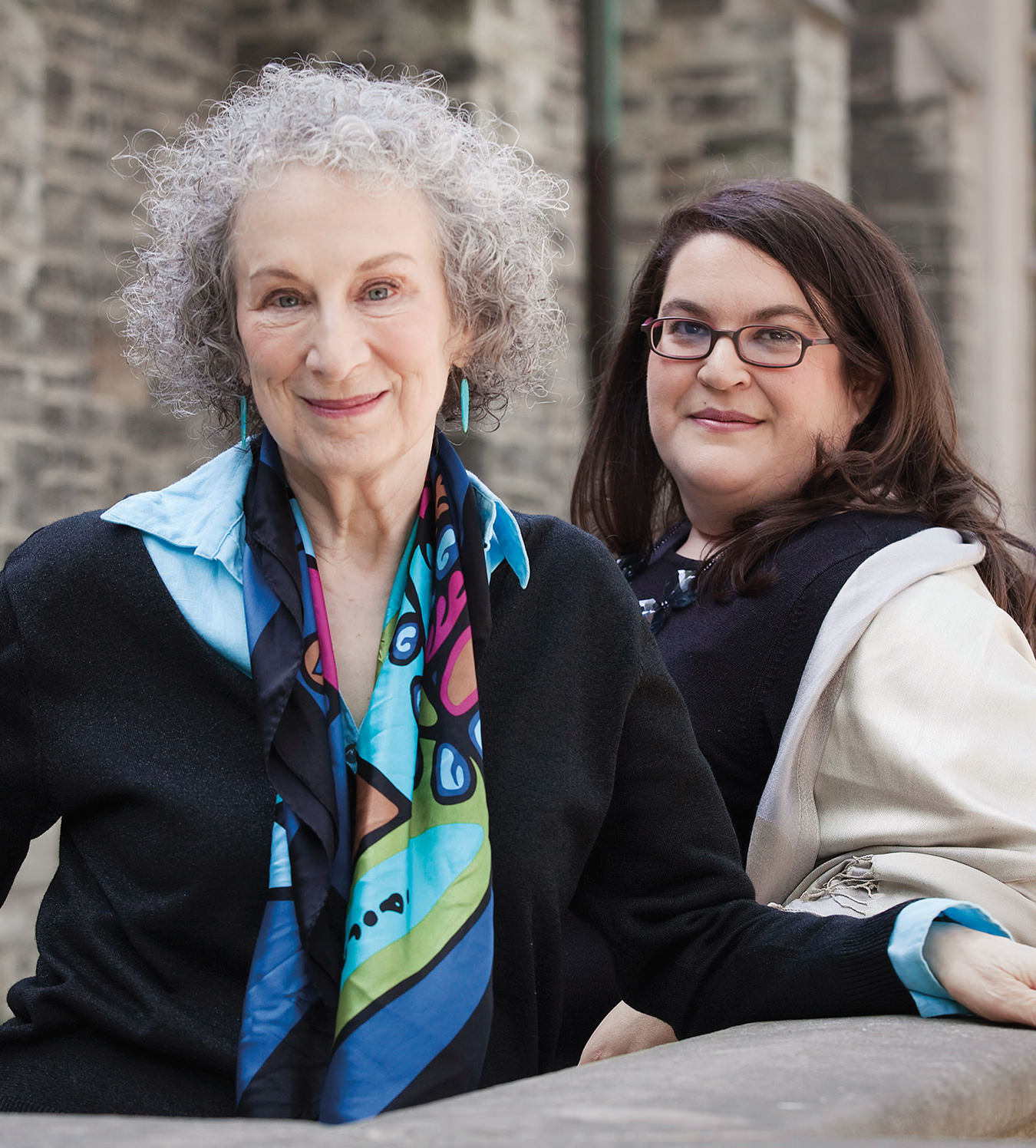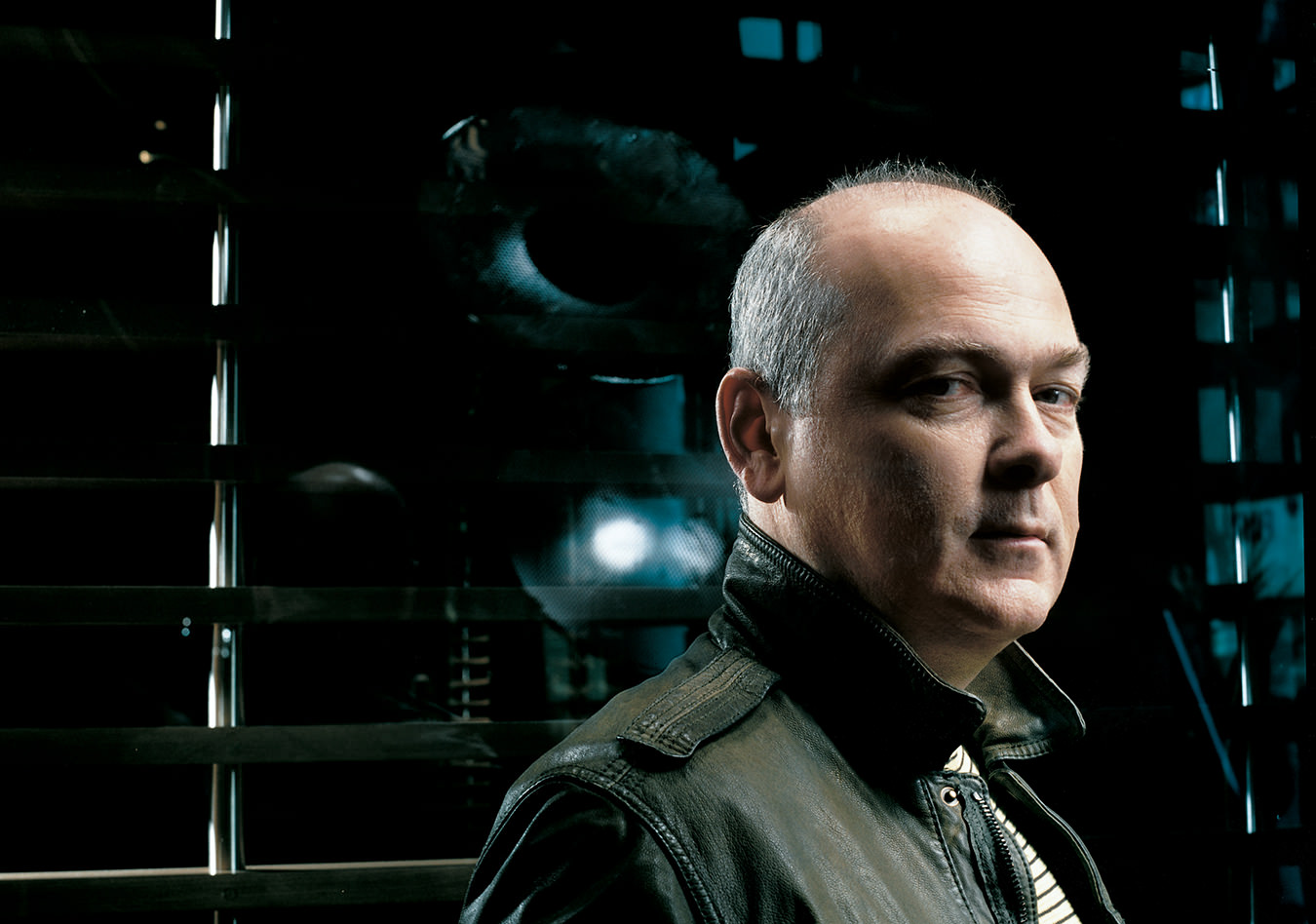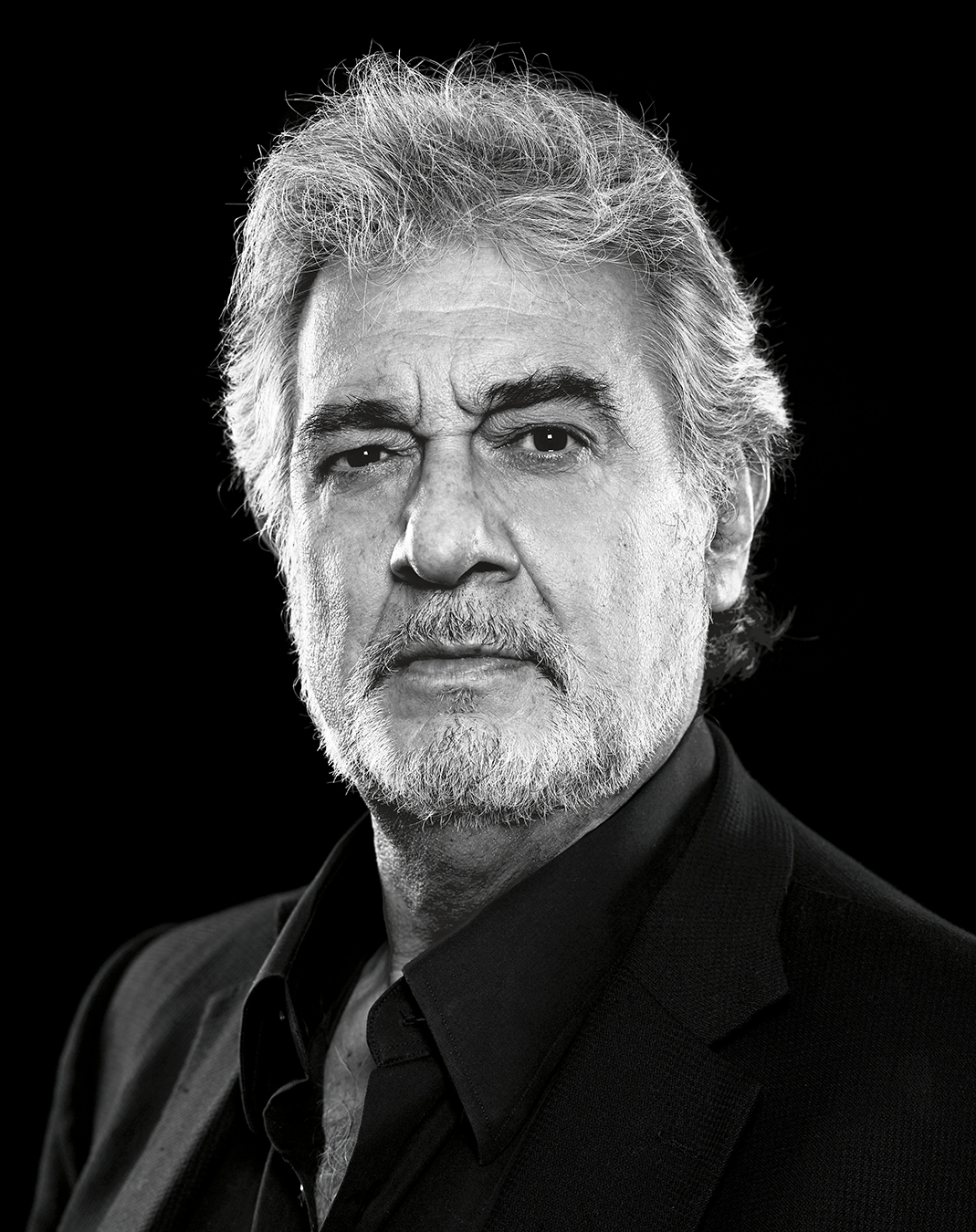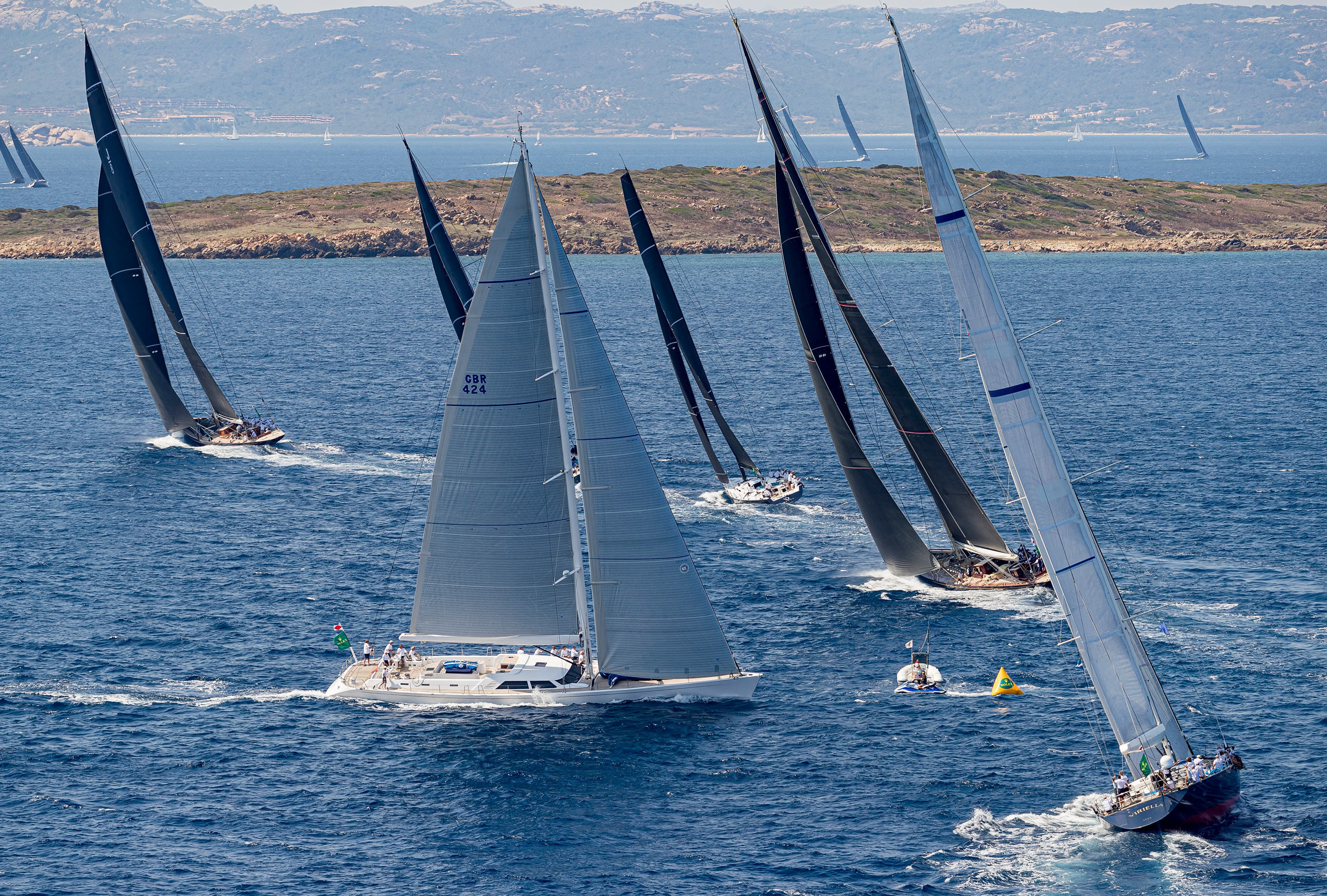
Racing in the Waters off the Coast of Sardinia
World of sailing.
“There’s a problem with this event—it’s too perfect.” So goes the joke shared by habitués of the Maxi Yacht Rolex Cup, held in Porto Cervo, Sardinia, every fall. It’s hard to disagree. We are on board Alix, a magnificent 90-foot (27-metre) Swan maxi yacht that’s serving as Rolex’s hospitality boat—not racing, but following the fleet.
The sun is warm, the sky and sea a medley of brilliant blues—a complementary contrast with the apricot-coloured rocks of the surrounding islands. The breeze is exactly the right strength to make the racing exciting, and our ride both fun and comfortable. Paul Cayard, seven-time world champion, veteran of multiple America’s Cups, winner of the Whitbread Round the World Race, and a Rolex Testimonee is on board. He explains the tactics of all the boats as they jockey for position on the line.
Held in the first week of September, the 2019 edition of the Maxi Yacht Rolex Cup attracted a fleet of 53 of the world’s biggest racing yachts (a maxi is more than 60 feet (18.3 metres) long, with no upper limit). Established in 1981 as a biennial event, the regatta has been supported by Rolex since 1985—the same year that the brand established its partnership with the event organizer, Yacht Club Costa Smeralda (YCCS). Since it became an annual event in 1999, it has grown to what must be the largest gathering of big race boats anywhere in the world.
They are attracted by a unique combination of factors: a tightly organized racing program and intense competition on the water, matched by tremendous camaraderie on shore, with the added attraction of Costa Smeralda’s world-class hotels and restaurants.
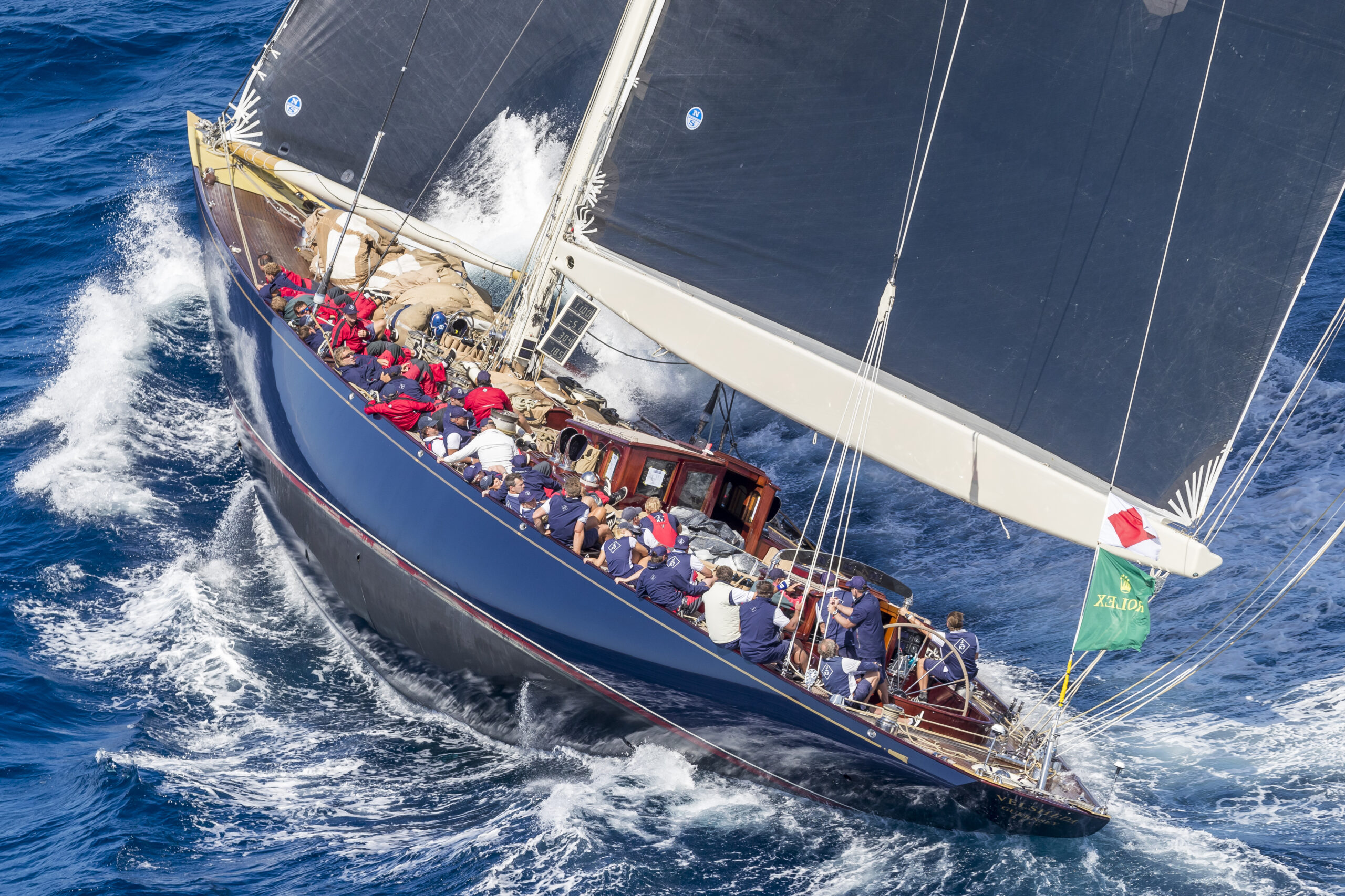
Tied up to the docks that fan out in front of the yacht club, the racing fleet is a spectacular sight. Representing a combined value of well over $100 million, it’s a fitting complement to the strong contemporary architecture of the yacht club building. (No ordinary clubhouse, it houses valuable collections of maritime memorabilia, contemporary art, and prehistoric
fossils—amassed by the club’s founder, the Aga Khan—and has a terrace featuring one of the most glamorous swimming pools in the Mediterranean.)
Observing the Maxi fleet, you can trace the entire evolution of yacht design over the past 90 years—examples of how hull shapes have changed from gracefully narrow and curvy to aggressive-looking wedges; the evolution of materials, from polished teak and brass to carbon fibre and titanium; the change in sail technology—with most yachts now using NTPT, the high-performance thin-ply technology material developed and patented by North Sails, and recognizable by its dark colour. Billowing white canvas is now the stuff of nostalgia.
Maxi yachts run the gamut from those designed primarily for cruising (built for owners who also like to race) to pure, stripped-down racing machines, and even J-Class—beautifully restored examples of the yachts built for the America’s Cup in the 1930s, and their modern replicas. Being separated into eight classes, with an intricate handicapping system, allows boats with different designs and performance to compete in the same race.
Today, yachting is one of the key pillars of Rolex’s sponsorship activities. However, the brand’s relationship with the sport goes back to 1958 when it formed an association with the New York Yacht Club. In 1966–67, throughout his record-breaking solo around-the-world voyage, Sir Francis Chichester wore a Rolex Oyster Perpetual. A sextant, charts, and a very accurate timepiece were essential for navigation in those pre-GPS and pre-satellite phone days.
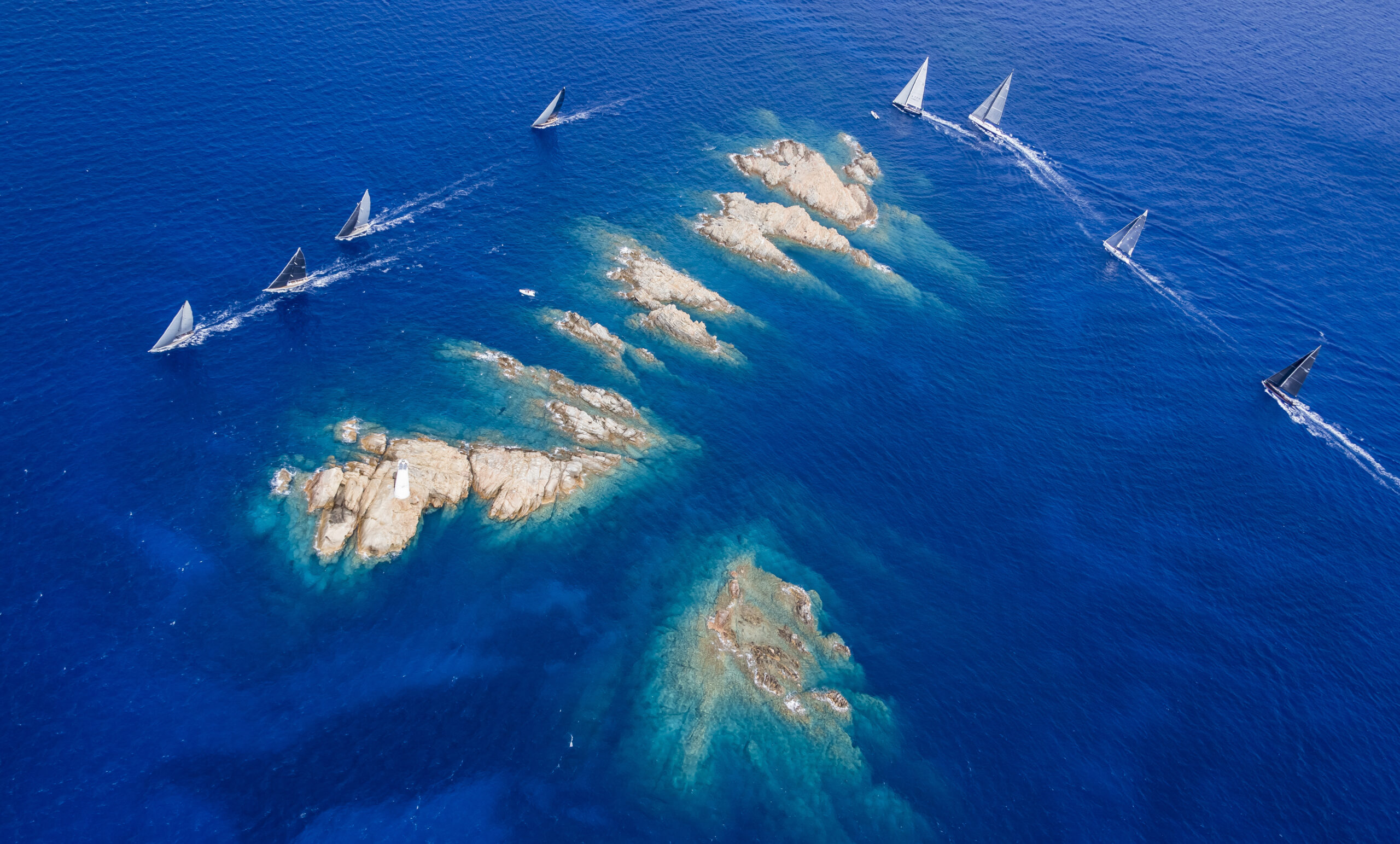
Just as the yachting community has been a leader in raising awareness of the need for marine conservation, Rolex’s philanthropic initiatives in that area go back several decades—latterly brought together under its Perpetual Planet umbrella. The YCCS itself took a significant initiative in 2017, celebrating its 50th anniversary by establishing the One Ocean Foundation. YCCS commodore Riccardo Bonadeo (a two-time winner of the event himself) considers it part of an “obligation to show gratitude to the sea,” emphasizing the importance of “action rather than just awareness.”
Today, Rolex’s yachting activities span the globe, encompassing partnerships with many of the world’s most prestigious yacht clubs and classic sailing events. As well as YCCS and the New York Yacht Club, the partners include the Royal Yacht Squadron (UK), Cruising Yacht Club of Australia, and Yacht Club de Monaco. Rolex partners with some 15 major yacht races and regattas, ranging from offshore classics such as the Sydney Hobart, the Middle Sea Race, and the Fastnet, to the 52 Super Series and SailGP.
But there’s nothing quite like the Porto Cervo Maxis—as it is known colloquially. “If you’re into sailing and you have the kind of money to own a big boat, Porto Cervo is your target,” says Cayard. “We all take the other [Maxi regattas] seriously, but this is the big one—this is the Rolex. You have the prestige, the history, the amazing weather and sailing conditions—it’s like a world championship.”
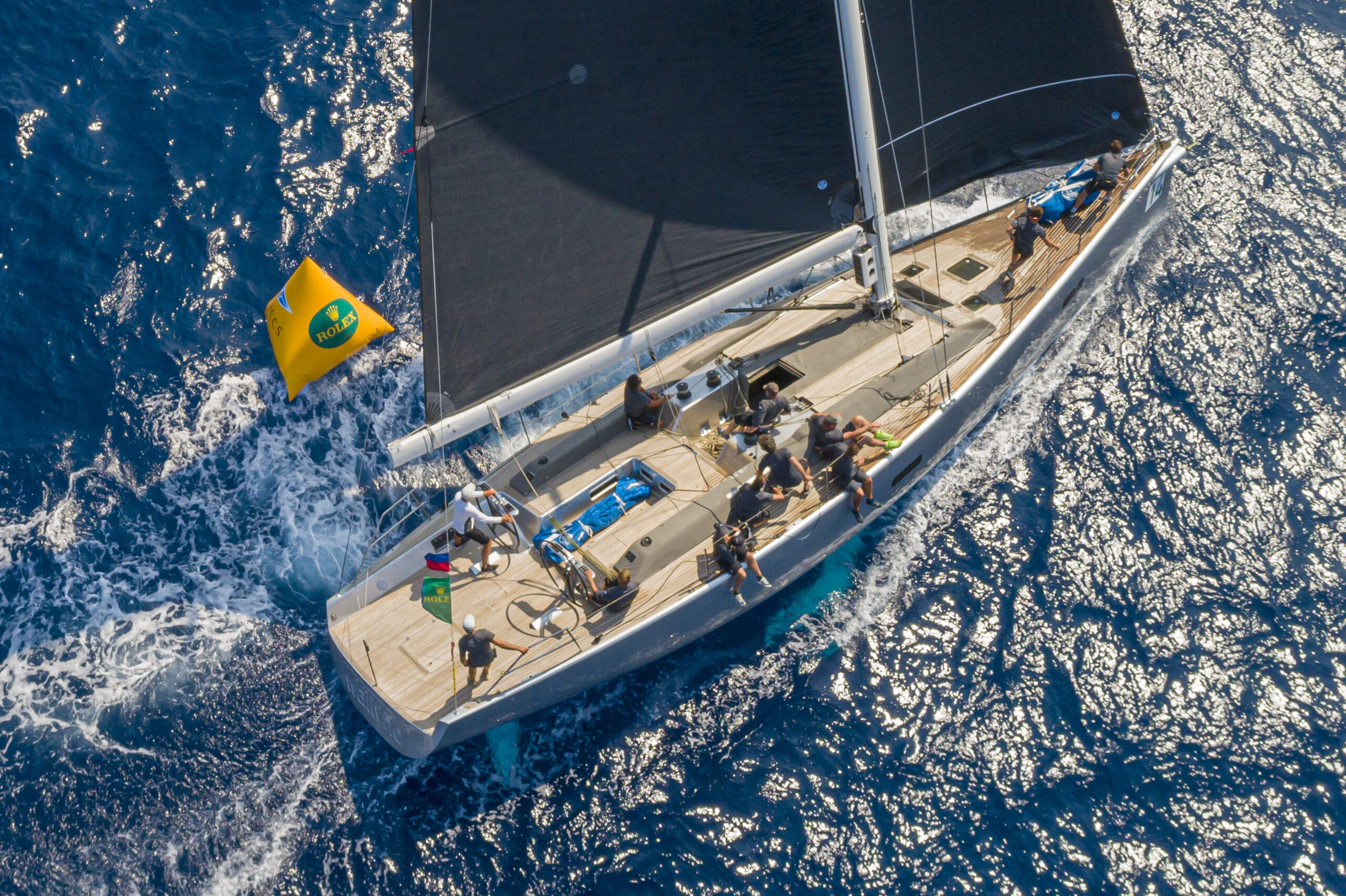
As you might expect at this level of any sport, things can get pretty intense—and here, the weather plays a significant role. That mistral day on the chase boat, we were lucky—we just got completely soaked by waves and spray. Others were not so fortunate: in the intensity of racing—as the top limit of safe wind speed imposed extreme loads on the yachts’ rigging—sails were blown out, a mast was broken, sailors were injured. All this for no reward other than the passion for racing.
Given the demands of racing yachts at this level, one of the most remarkable things about the Maxi Yacht Rolex Cup is that there is no prize money; for the yacht owners, it’s all about the thrill of beating their peers. An unusual feature of the regatta is that, although owners are allowed to hire professional crew, they must helm their own yachts for the great majority of races. When they cannot, the substitute helmsman must be classed as an amateur and the yacht receives a penalty on the result of the race.
Instead of money, the winners receive a trophy and a Rolex watch—this past regatta, a Rolex Rolesor Yacht-Master. The engraving on the caseback is unique: proof that they have achieved supremacy in a sport that they are passionate about, by steering their yacht throughout one of the world’s most prestigious regattas. A regatta that is unlike any other.
_________
Never miss a story. Sign up for NUVO’s weekly newsletter, here.

